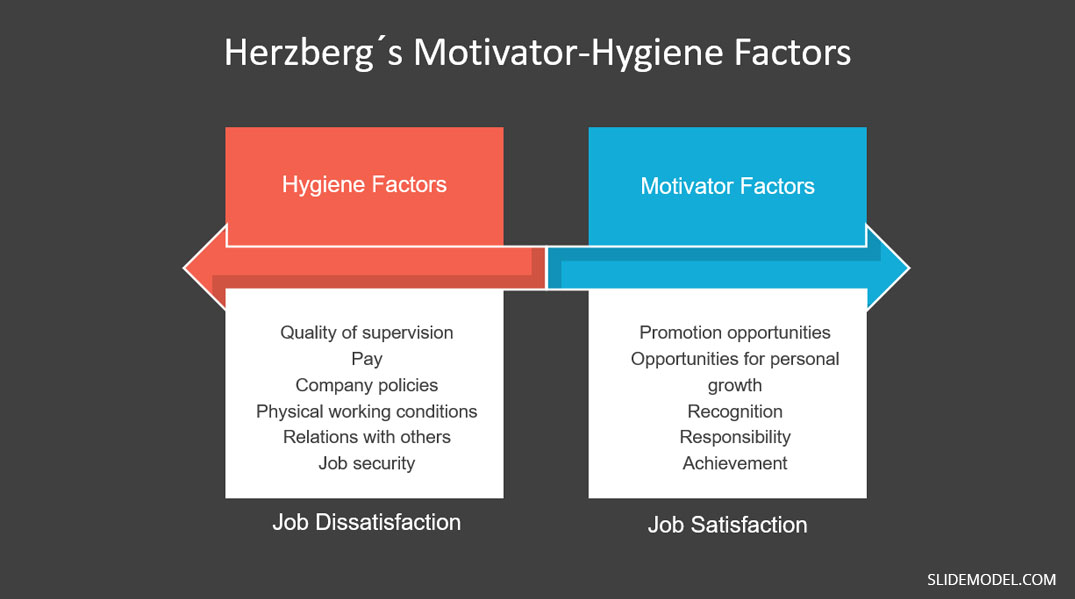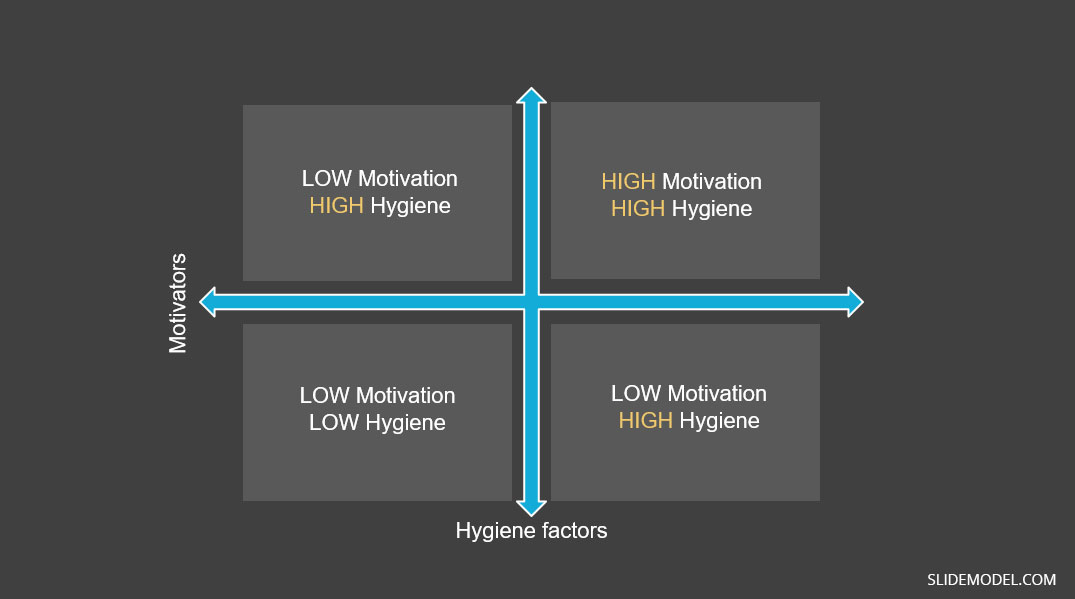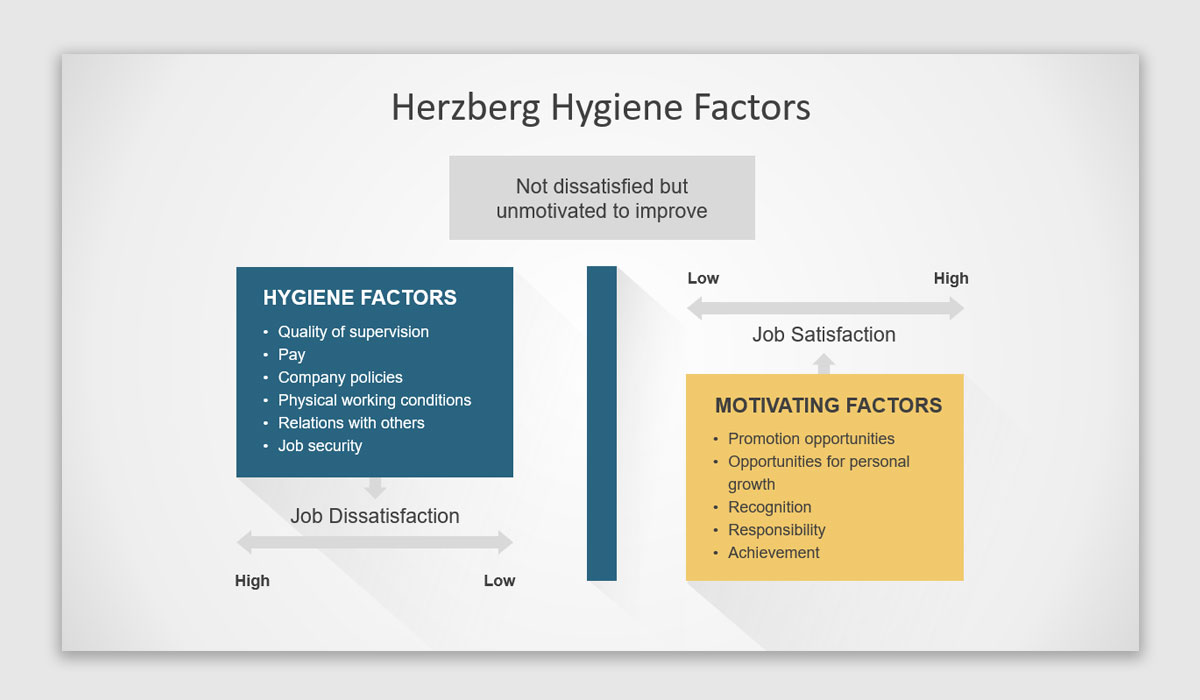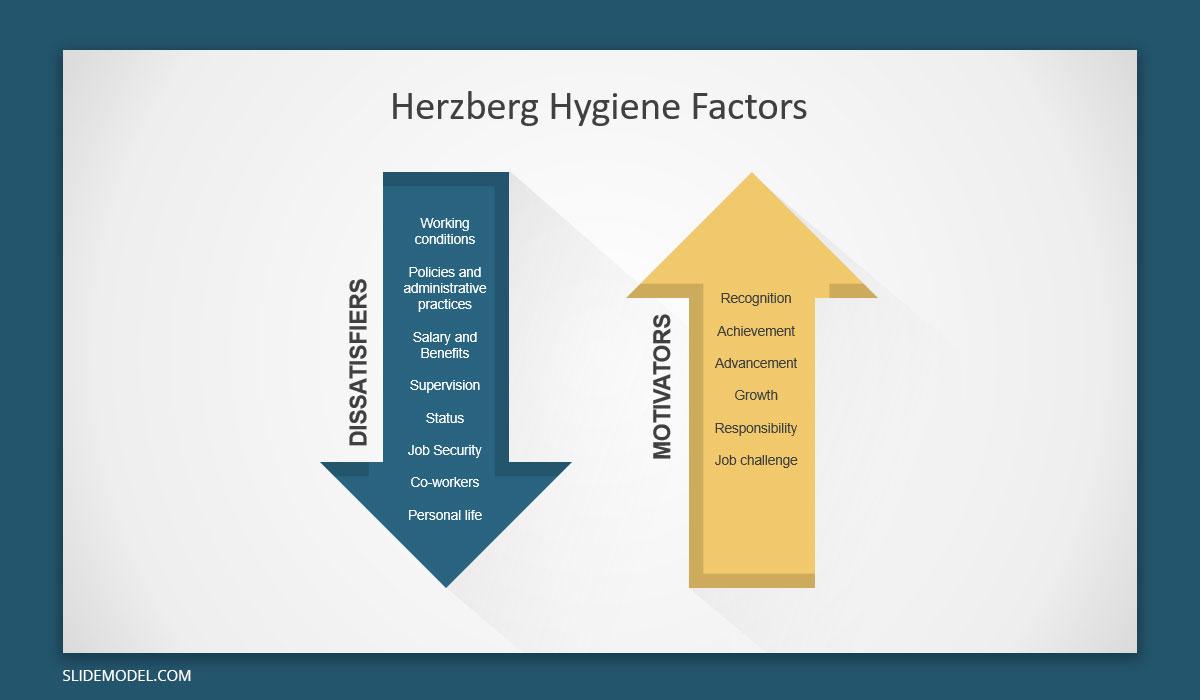
Employee engagement has finally come to the forefront of the business world. A motivated, healthy and committed workforce is key to effectively scaling your business. Businesses with engaged employees enjoy lower rates of employee turnover. This leads to lower hiring costs and faster talent acquisition. A study conducted by the American Psychology Association revealed that 89% of employees working at organizations with engagement and wellness initiatives are more likely to recommend the company as a good place to work.
Further, engaged employees are more productive and demonstrate 21% more profitability. This is because empowered teams have lower absenteeism, higher energy level, and better productivity.
The benefits of an engaged workforce are clear, but they do not come without the direct involvement of the management. Today, businesses are using a variety of strategies to improve employee engagement.
In this post, we’d like to focus on one strong methodology – Herzberg’s Two Factor Theory.
What is Two Factor Theory?
The Two Factor Theory (also known as the motivation-hygiene theory) was conceived by Frederick Herzberg, an American psychologist who became a central figure in business management in the 70s-80s. His most famous publication in Harvard Business Review Journal called “One More Time, How Do You Motivate Employees?” has sold over 1.2 million reprints.
His two factor or hygiene-motivation theory first came to light in 1959 (not to confuse with Schachter two factor theory of emotions). It was the result of the work he did in workplace psychology. Many business managers study Herzberg’s theory because it places a high level of emphasis on the value of the effectiveness of managers in the workplace.
As part of his research, Herzberg regularly conducted interviews with different workers. At some point, he noticed an interesting pattern in responses: he noticed that people described their good on-the-job experiences very differently than the bad ones. Based on this observation, he created a theory that job satisfaction levels depend on two types of factors:
- Motivators that contribute to job satisfaction.
- Hygiene factors that contribute to job dissatisfaction.

Motivators
Like the label suggests, motivators steer up employee satisfaction and improve their motivation. These might include rewards, recognition, advancement opportunities, and access to training.
Hygiene
These are the factors that impact job dissatisfaction and can result in lower engagement, motivation, and faster burnout.
Hygiene factors include:
- Working in a safe environment
- Being spoken to in a respectful manner
- Having a competent manager
- Being paid fairly for the work you do
In the two factor theory, both motivators and hygiene exist independently of one another. In other words, a job can have motivators that contribute to satisfaction, but also hygiene factors that increase dissatisfaction if they are absent. This, in turn, creates several different situations in the workplace.
Hygiene Motivation Combinations

Depending on the working conditions at a company, employees can experience several combinations of these two factors. These are:
High Hygiene and High Motivation
This is the ideal situation. It takes work to create this environment, but it is worthwhile. In this case, employees are happy. They feel motivated, they have faith in their managers, and they believe they are compensated fairly. They are also hopeful for new career opportunities.
High Hygiene and Low Motivation
In this environment, workers tend to show up, do their jobs, and collect their paychecks. They aren’t particularly motivated to go the extra mile. These workplaces are fair, safe, and well-managed. Employees are compensated fairly. There are simply no motivating factors here to make the work seem meaningful.
Workers in these situations may not find much reason to complain. Unfortunately, they are also not driven to be particularly loyal to their employers either, and will quickly leave if offered more money or better perks somewhere else.
Low Hygiene and High Motivation
Imagine working for an employer who gives you meaningful projects, praises your work, and allows you to have plenty of autonomy. On the other hand, you work too many hours, your rate of pay is shameful, and your office is too small. That’s an example of low hygiene, high motivation workplace. This is often common in startups, NGOs and high-intensity workplaces. Lack of resources to properly compensate employees, and demanding jobs without sufficient respite can lead to this scenario.
Low Hygiene and Low Motivation
This is the worst of the worst. Employees here have complaints about pay, work conditions, management competency, lack of opportunity, and more. These work conditions are often exploitative as they are usually only tolerated by people who don’t have other options. Such a state of affairs means that the employer needs to take action fast unless they want to lose their entire team and company subsequently.
How to Apply The Two Factor Theory At Your Workplace?
If you decide to use Herzberg’s theory of motivation in the workplace to increase employee retention, motivation, and productivity, you have to understand the current conditions as perceived by your workers. Next, you’ll have to implement the following changes.

Identify And Minimize The Dissatisfiers
First, you must identify the hygiene factors that are contributing to workplace dissatisfaction. You must avoid assumptions. Instead, you’ll have to solicit feedback from your employees.
In fact, merely asking employees to share their ideas and feedback with you is a good first step towards increasing employee engagement. People who feel that their voice is head are 4.6 times more likely to feel motivated and do their best work, as a recent report from Salesforce indicates.
Thus, introduce a regular practice of polling your teams. Here are some things to keep in mind when you work on your program:
- Assure anonymity or otherwise make sure your employees feel comfortable speaking freely and honestly.
- Avoid asking leading or biased questions.
- Collect information from employees at different levels, from different shifts, etc.
- Keep in mind that obtaining employee feedback should be an ongoing process. It’s not a matter of simply collecting data once, then assuming that nothing will change.
- Analyze the feedback you receive as a whole, and in logical categories (e.g. hygiene information among third shift employees or hygiene among sales floor staff).
- Recognize the limitations of two factor theory in identifying what drives workplace motivation. Management bias can lead you to believe that you have created a better work environment than you really have. Employee bias can cause them to see only external factors as the cause of their dissatisfaction.
Once you have the information you need, you can begin working on improving managerial practices and offering workers more autonomy. Here are some strategies to try:
Introduce more relevant and valuable employee training programs. Offer opportunities to upgrade skills in ways that will make them better prepared for leadership positions. It’s also important to implement learning and training initiatives that actually match the employees’ skills levels. Also, add flexible learning options that allow employees to self-direct their training and development.
Instill a sense of purpose by educating employees on the value of their jobs in the context of your organizational goals. Encourage job shadowing and cross-training so that workers can see how their work contributes, and learn to appreciate the contributions of others.
Create a culture of communication where the company-wide buy-in is sought before making major changes. While there’s no way to guarantee that every employee will be satisfied with every change, simply being given the opportunity to provide feedback in a meaningful way is important. You may also want to experiment with the Hoshin Kanri approach to business planning and management.
Flatten the management structure of the organization at least in terms of communication. Employees shouldn’t have to go through layers of management structure to access the people who can give them the information they need. Break the silo and create new policies that will encourage people to reach out to one another with ease and have better visibility into what other units are doing.

Improve Working Conditions
Now, you can begin to implement changes that will improve working conditions for your employees according to Herzberg two factor theory.
One place to start is developing a new employee recognition program. This is exceptionally important, as recognition is the best tool when it comes to motivating employees to do great work. In fact, it overshadows compensation and autonomy combined. Although, these are also important factors.
It’s also important to recognize individual contributions, to improve on-the-job engagement. Many workplaces emphasize a teamwork culture. That’s surely important because success depends on everyone cooperating in order to achieve a set of goals. Unfortunately, individual contributors can get lost. Highly productive workers, innovators, and those that go the extra mile can feel demoralized if their extra efforts aren’t specifically recognized. One simple, two factor theory example would be providing recognized employees with a tangible gift, accolade or another form of recognition.
Consider the physical work environment as well. Having an office that is uncomfortable or inefficient can contribute to a lack of motivation. It’s important to ensure that individual workspaces are safe and comfortable and that they work for each employee. Despite the common belief, open office layouts are not particularly great for team productivity. So you may want to do some renovation work and switch workstations a bit. The condition of shared spaces is important as well.
Finally, the motivation theory in all this cannot be proven without providing workers with career growth opportunities. Employees simply aren’t going to be engaged if they cannot identify a clear path for them in the organization. For many, that will mean opportunities to move into management or leadership positions. For others, job growth means spending more time each day doing things that are satisfying to them. To apply two-factor theory appropriately, you’ll need to create paths for both.
Conclusion
There are many theories of motivation that managers have attempted to implement. However, Herzberg’s theory is widely respected and used across many domains. Done correctly, the application of Herzberg two factor theory can boost employee engagement, improve productivity, and reduce turnover. That’s because it addresses the different types of motivation that are impacted by elements that are de-motivational and those that are motivational. By taking the time to understand your employees, and implementing policy changes, you can significantly improve employee motivation.


